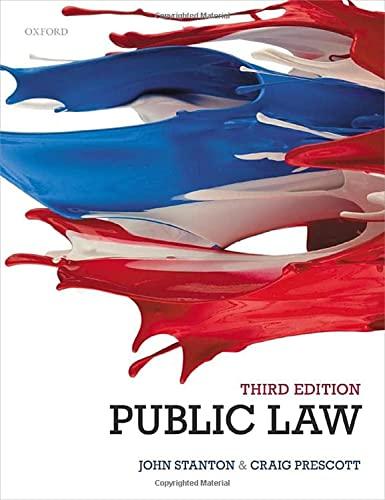Question
1. Our criminal courtroom is designed to have two parties, the prosecutor and the defense, along with a jury in most trials, with a judge
1. Our criminal courtroom is designed to have two parties, the prosecutor and the defense, along with a jury in most trials, with a judge overseeing everything. This design is set up with different duties and responsibilities. The prosecutor is seeking justice for the victim, the defense is trying to provide a solid legal representation for the accused, the jury (if appropriate, not all trials will have a jury) will decide guilt or innocence, and the judge makes sure all legal policies and procedures are followed, as well as decides the sentence if there is a guilty plea. This structure is set up to include checks and balances but sometimes (not often) one or more of the parties involved has their own agenda and unethical (and even illegal) decisions are made. Explain your choices in this scenario by addressing the following questions: What are attorney-client privileges? What are the exceptions to this rule? Do you think it is honored more often than not by attorneys and the court system? Why or why not? Give examples to support your position.
2. Explain the plea bargain process. Provide several examples of how this process works. Do you agree with plea bargains? Why/why not?
Step by Step Solution
There are 3 Steps involved in it
Step: 1

Get Instant Access to Expert-Tailored Solutions
See step-by-step solutions with expert insights and AI powered tools for academic success
Step: 2

Step: 3

Ace Your Homework with AI
Get the answers you need in no time with our AI-driven, step-by-step assistance
Get Started


